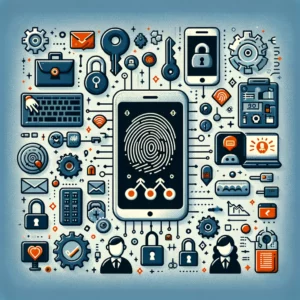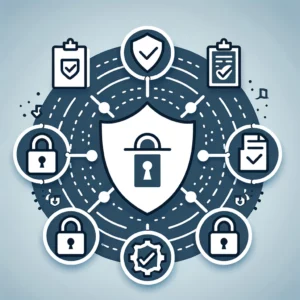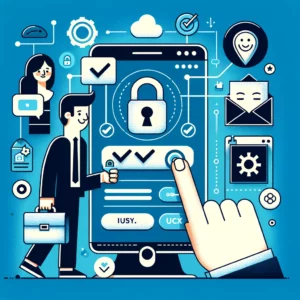
2024-1-11 08:35:37 Author: securityboulevard.com(查看原文) 阅读量:9 收藏
I understand that security is a top priority for you. That’s why I want to talk about multi-factor authentication (MFA) benefits, a security protocol that requires multiple methods of verification from independent categories of credentials. As cyber threats become more sophisticated, relying on a single password isn’t enough to ensure the safety of your data. MFA is like a second lock on your door, and in a world where digital break-ins are increasingly common, you need all the protection you can get.
To grasp the importance of MFA, let’s start with the basics. Traditional security often hinges on just one factor – something you know, like a password. But as you’ve probably experienced, passwords can be cracked, guessed, or stolen. MFA introduces one or more additional verification steps into the mix – something you have, such as a mobile device or security token, and something you are, like your fingerprint or face.
Let’s think about the risks for a second. Digital security breaches are not just a nuisance – they can lead to serious financial and reputational damage. The shift to MFA addresses this by adding layers that make unauthorized access significantly harder. If a password is compromised, an attacker would still need to conquer another hurdle to get into your system. It’s a smart way to stay ahead of the game.
Comparing MFA with old school password-only systems is like comparing a high-tech alarm system with a simple deadbolt. Sure, that deadbolt might have worked fine in the past, but burglars have learned to pick locks. MFA is your alarm system, motion detectors, and security team wrapped into one package. The best part is, this isn’t just for the tech elites – MFA is widely accessible and increasingly user-friendly, meaning it’s a viable option for both businesses and individuals who want to protect their digital presence.
How Does Multi-Factor Authentication Enhance Security?

Security isn’t just a buzzword; it’s a shield against the rising tide of cyber threats. Multi-factor authentication (MFA) isn’t just another layer — it’s a veritable fortress door. It operates by requiring more than one piece of evidence to verify identity, drastically reducing the chance of unauthorized access. Here’s the rundown: with MFA, a cyber intruder with your password still lacks the clearance to breach your account.
Consider a common scenario: online banking. With MFA, after entering your password, you might receive a text with a code or be prompted to confirm your login attempt on a mobile app. Corporations enforce similar methods, asking employees to combine passwords with security tokens or fingerprint scans. For someone like you or me, it can be as simple as linking our social media accounts to our smartphones.
Does all this effort pay off? Absolutely. Reports from cybersecurity entities show a significant plunge in compromised accounts where MFA is enforced. To give you a clear picture, your account is 99.9% less likely to be compromised if you use MFA, according to a Microsoft study.
MFA, though highly effective, isn’t without its hitches. Some worry it complicates the login process. But consider this trade-off: a few extra seconds during login versus the fallout of a security breach. It’s an easy choice. With advancements in technology, MFA methods are becoming more streamlined and user-friendly day by day.
Imagine, in no time, biometrics like facial recognition could become commonplace. MFA becomes as effortless as taking a selfie.
User Experience and Compliance: How to Balancing Security with Convenience

A secure login process is non-negotiable for protecting sensitive information. However, the added layers of security must not come at the cost of user frustration. An optimal balance between safety and user-friendliness is essential for an effective multi-factor authentication (MFA) system. When this balance is achieved, users both adopt and maintain necessary security measures more consistently.
User resistance to additional security steps is a common hurdle. To combat this, many organizations aim to make MFA interfaces as streamlined as possible. Techniques such as using a familiar device, like a smartphone, for secondary authentication can simplify the process. Moreover, innovations like biometric verification have made MFA quicker and more intuitive.
Apart from user experience, compliance plays a major role in urging organizations to implement MFA. Various industry standards and regulations now require MFA for heightened security protocols. Failing to comply can result in substantial fines and a loss of consumer trust. As a result, MFA becomes not just a security measure but also a mandate for the continued legitimacy of an organization.
Clear communication about the benefits and requirements of MFA also influences user acceptance. Highlighting its role in preventing unauthorized access to personal and corporate data can help users appreciate the need for a multi-step verification process. Additionally, teaching users how to swiftly navigate MFA tools can lead to higher rates of adoption.
Implementing Multi-Factor Authentication: What Are Best Practices and Considerations

When I decide to implement MFA in an organization or for personal use, I face a blend of technical and human factors. It’s crucial to select the RIGHT types of authentication factors to meet security needs while also considering user experience. Let’s look at options like biometrics, security tokens, and SMS codes, weighing their security levels against ease of use.
I would emphasize education and training as it ensures users are familiar with MFA processes. Set up workshops, create simple guides, and provide support to reduce resistance and encourage widespread adoption.
Finally, I bear in mind the technical and logistical aspects of deploying MFA. This includes considering the integration with existing systems, possible scalability for growing user bases, and planning for backups in case of factor failure. I always advocate for regular review and updates to security practices, as staying ahead of potential threats is paramount.
Frequently Asked Questions
Is Multi-Factor Authentication Effective?
Multi-Factor Authentication (MFA) is highly effective in enhancing security. It adds multiple layers of defense, making unauthorized access significantly harder. By requiring two or more verification methods, MFA effectively thwarts many common cyber threats, such as password theft.
Is Multi-Factor Authentication Worth It?
Absolutely, the benefits of Multi-Factor Authentication are substantial. It provides an extra security layer, protecting sensitive data and systems from breaches. This added security is crucial, especially for businesses handling confidential information, outweighing any minor inconveniences.
Why is Multifactor Authentication Important?
Multifactor Authentication is crucial for robust security. It protects against various cyber threats by ensuring only authorized users access accounts, even if a password is compromised. This is vital in today’s digital landscape, where data breaches and cyber attacks are increasingly common.
What are the Disadvantages of Two-Factor Multi-Factor Authentication?
While highly beneficial, Multi-Factor Authentication has some drawbacks. It can introduce complexity and potential user inconvenience. For instance, losing access to a secondary device can lock users out. Additionally, some methods, like SMS verification, can be vulnerable to interception or social engineering attacks.
The post Exploring The Benefits Of Multi-Factor Authentication For Security appeared first on Endpoint Security.
*** This is a Security Bloggers Network syndicated blog from Endpoint Security authored by Michael Toback. Read the original post at: https://smallbizepp.com/benefits-of-multi-factor-authentication/?utm_source=rss&utm_medium=rss&utm_campaign=benefits-of-multi-factor-authentication
如有侵权请联系:admin#unsafe.sh